Disclosure: I received this complimentary product through the Homeschool Review Crew.
Over the past several weeks, my family has decided to try something new in our homeschool. We tend to be Classical Homeschoolers, albeit relaxed about it, but decided to do something different for our homeschool science curriculum. Our family has been using NatureGlo’s eScience MathArt and Science Course Bundle from NatureGlo’s eScience. For the Homeschool Review Crew, we received the 25-course bundle.
Both my kids chose different science courses to try in our homeschool. We also decided to take a look at the MathArt courses, as well. Let me share what NatureGlo’s eScience is and how we used in in our homeschool.

NatureGlo’s eScience- Relaxed Homeschool Science Courses
NatureGlo’s eScience is an online natural science and MathArt program. It contains 25 courses taught through video lessons, slides, study guides, and other online materials (links to other sites). The courses are for ages 10+.
One nice thing about the bundle is that the whole family has access to the courses. You aren’t buying it for each child. It is always great when homeschool families find a program that you can purchase for the family. It can get expensive buying individual programs.
Topics Covered in Science
For the science courses, you can find unit studies in:
- Botany
- Geology
- Marine Science
- Zoology
Kids can learn about such topics as herps (reptiles and amphibians), marine mammals, oceans, and Giant Redwoods. There are multiple unit studies in the areas of herps and marine biology.
Some of the unit studies take a week, while others are six weeks long. However, you can definitely move at your own pace and follow any rabbit trails that come your way. The classes are easy to adapt to meet your homeschool science needs.
NatureGlo’s MathArt Courses
MathArt was a new concept I hadn’t heard of prior to this review. My daughter and I were both intrigued by what it was all about. Basically, MathArt is looking at all the patterns in nature and art. It could be the geometric shapes or mathematical patterns, like the Fibonacci Number Series.
Topics Covered in MathArt
In the area of MathArt, there are serval unit studies, though not as many as science. Most of the MathArt classes show how math is in nature. Kids learn geometry and patterns in the world. However, kids also learn how artists follow math laws and principles too.
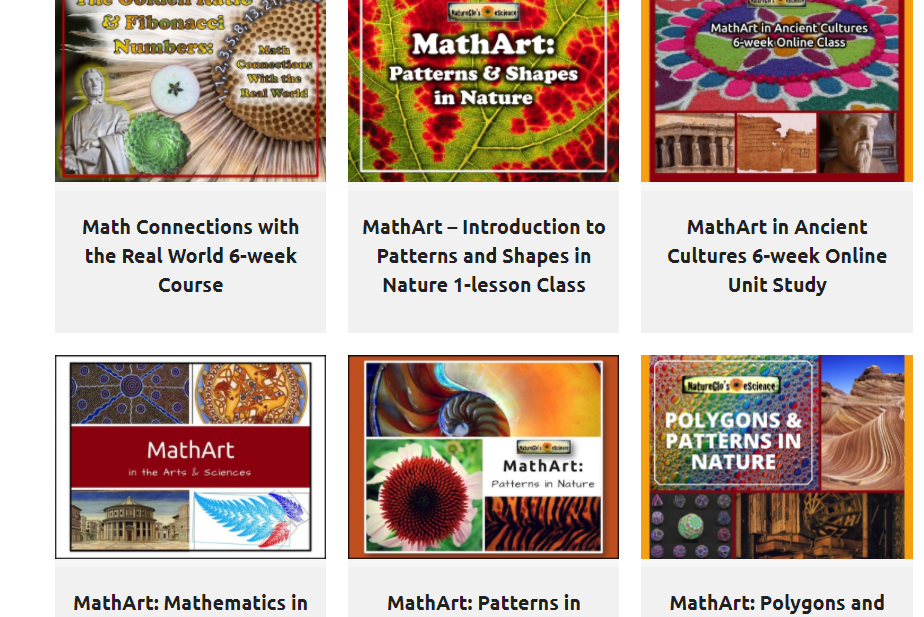
How to Use the Courses
As I mentioned, the course bundle contains 25 courses. It can get overwhelming and have you wondering where to begin. You have some options, though. You can just choose any course that interests you or use the Road Map to plan it out.
What is the Road Map?
The Road Map gives you an organized order to work through the courses for MathArt, Herps, Marine Science, Botany, and Geology.
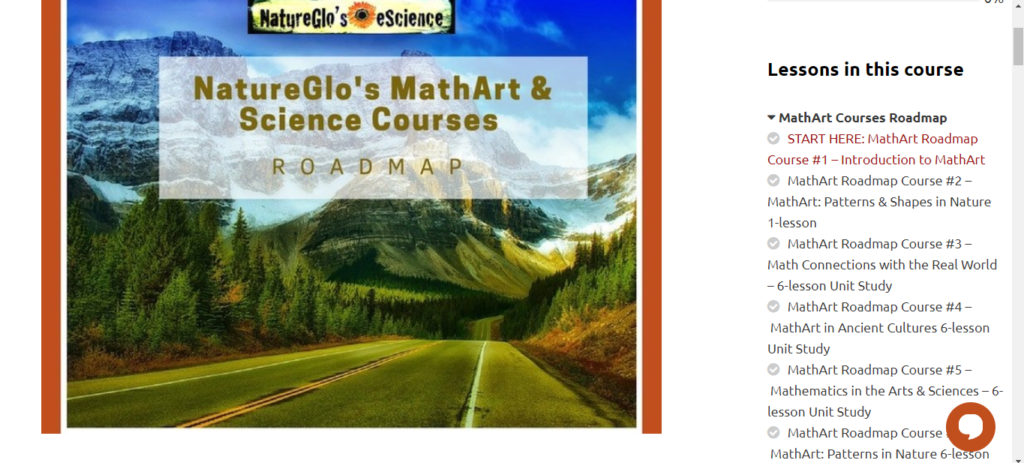
This guide gives you an order in which to take the courses. It is especially helpful with the herps, marine science, and MathArt since they have a number of courses.
We used the Road Map for marine biology and herps. I like having some order to follow. After looking more into the classes, it doesn’t seem to matter what order you take them, though.
Inside the Homeschool Science and MathArt Courses
I would say that kids can navigate the courses by themselves. There is a clear order to follow and directions to walk them through a lesson. Once a lesson is complete, they mark it as such, and it will bring them to the next one. It’s that easy.
In each course, kids watch a video of a PowerPoint presentation that is read to them by Gloria Brooks. It is a basic overview of a topic. The videos are replays of previous online courses taught, so kids are often commenting or asking questions within the videos.
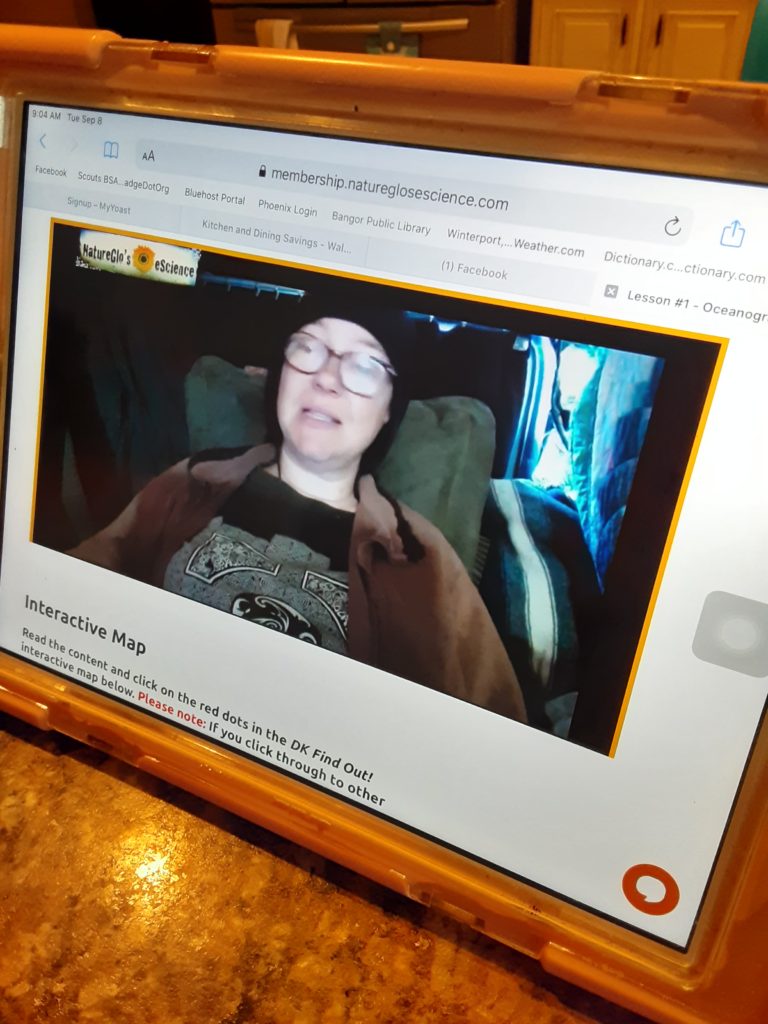
After the presentation, kids work through the work that follows. There may be videos to watch, art projects to complete, research, or links to sites where they can learn more. Plus, the lessons often have study guides that quiz the kids over the information in the PowerPoint presentation.
Once kids have completed a lesson in the course, they receive Achievements. Kids receive certificates when a course is fully completed.
How We Used the eScience and MathArt in Our Homeschool
Now that I’ve given you a little background on the program, I want to share how we have used it in our homeschool. The primary focus for me was to use the eScience course for our homeschool science this year. My kids are in 6th and 8th grade, so I decided to let go a little and let each child chose a course to work on.
Since my daughter and I were interested in finding out about the MathArt, my daughter and I did a little MathArt together, too.
Herps Explorers: Anatomy, Caecilians, Lizards, Gharials, and More
When I showed my 6th grader the courses, he was instantly drawn to the herps courses. He wanted to learn all about reptiles and amphibians. Since that interested him, I let him. I looked at the Road Map on where to begin, and it said Herps Explorers: Anatomy, Caecilians, Lizards, Gharials, and More. So that is where we began!
In the beginning, I sat with my son while he worked through the course. I wanted to see what it was all about. Over time, I checked in but let him work independently. He was very good at working through the course and exploring the material on his own.
I didn’t have my son complete the study guides. However, he did do the art assignments within his lessons. For one lesson on salamanders, he watched a step-by-step video on how to draw one and completed his own.
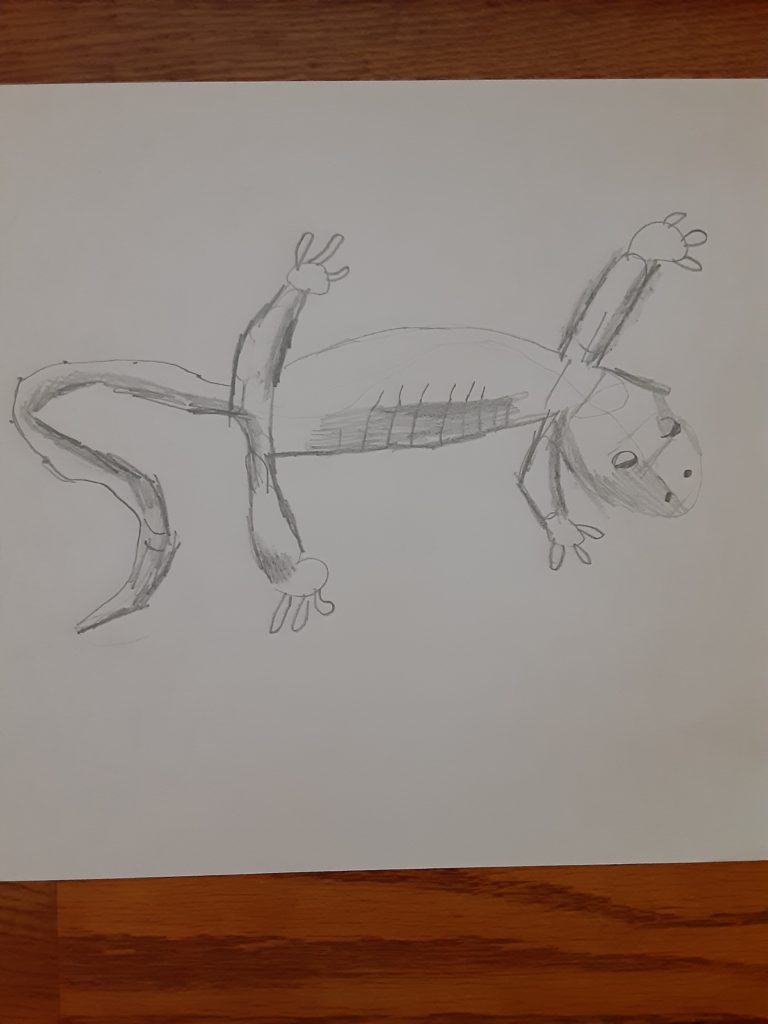
Probably my son’s favorite part of the lessons is the extra video links. In one video, he watched a girl, who was around his age, handling all kinds of snakes without fear. He loved this!
Another day, after one lesson on lizards, he began reading about different kinds of lizards. He wanted to see what would make a good pet but ended up busy for an hour or more researching lizards. It all started because of one of the links in an assignment.
For my son, the courses work for him. It sparks his interests, and if he wants to learn more, he will keep exploring. He will continue using these courses for his homeschool science.
Marine Biology: Oceanography, Marine Plants, and Invertebrates
While my son did herps, my daughter decided on marine biology. Again, I used the Road Map to give us a starting point. For my daughter, it was oceanography.
Her classes had a lot of additional videos, interactive maps, and a selection of different projects to complete with her lessons.
While I didn’t have my son complete the study guides, my daughter did. She liked that the questions told her which slide the answer was on so she could look back at the slides, as needed.
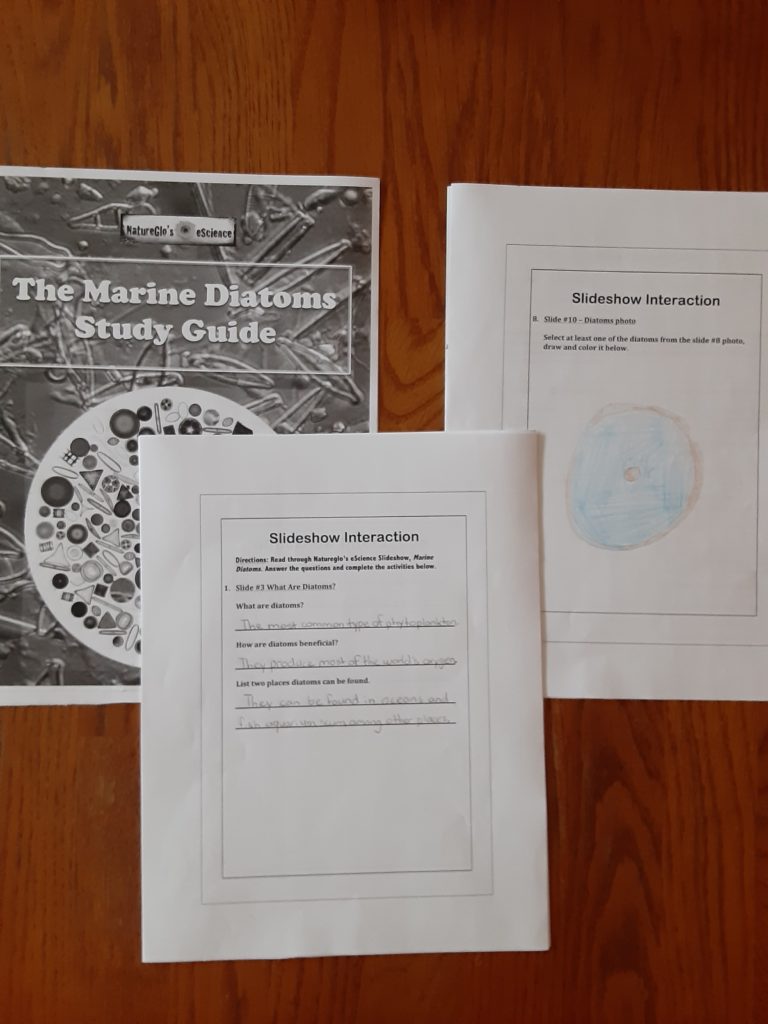
Overall, this homeschool science program was not a fit for my daughter. As a learner, my daughter is what I would call a traditional learner. She prefers textbooks and assignments laid out for her. Basically, she likes structure. Relaxed, unschooling styles don’t work for her.
All in all, it isn’t that she didn’t like the program. The layout of this program doesn’t fit her learning style.
MathArt Courses
For MathArt, we took a look at the Introduction to MathArt and Geometric Beauty of Snowflakes. Both were quite interesting to learn about the different geometric shapes and patterns in nature. I learned about the Golden Ratio, something I knew nothing about.
The Geometric Beauty of Snowflakes had such beautiful pictures to show the geometric shapes and symmetry found in snowflakes. This would be a perfect way to incorporate geometry in a meaningful way and show real-life applications of geometry in our natural world.
Take a look at some of the topics taught in the snowflake course.
The MathArt courses are definitely for kids 10+. Some of the math concepts discussed may be harder for younger kids to understand or follow. It is quite interesting, though to see how math is in nature and art.
Overall Thoughts This Homeschool Science and MathArt Courses
Overall, the homeschool science courses and MathArt will work best in a relaxed or unschooling environment. I see these courses as a great way of giving kids a starting point and allowing them to take off and explore further the topics that interest them. It certainly worked this way for my son.
To learn what other homeschool families thought of NatureGlo’s eScience and MathArt, click the banner below.

Happy Homeschooling!
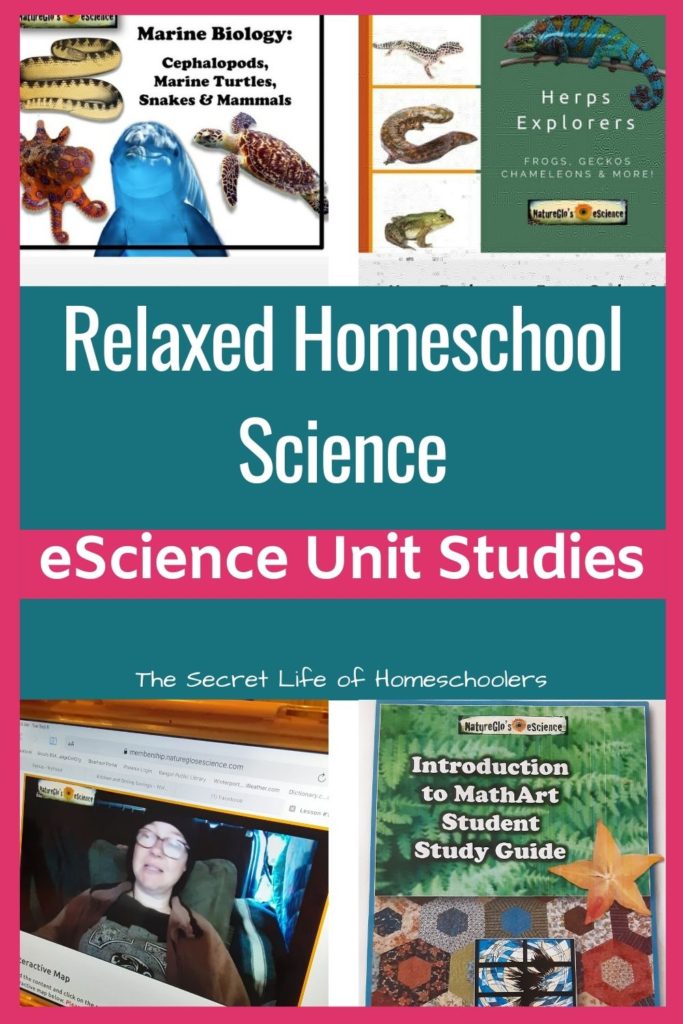
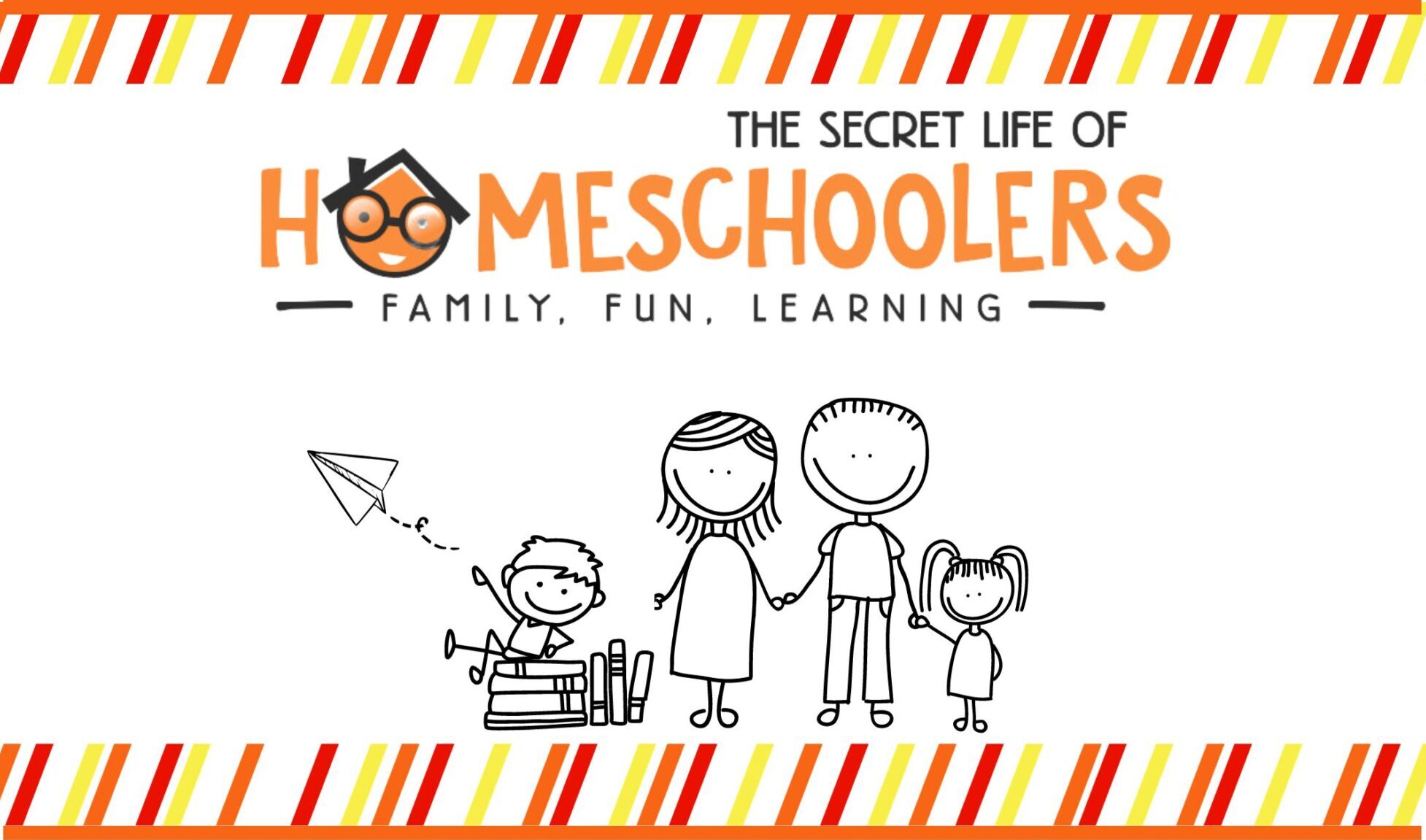
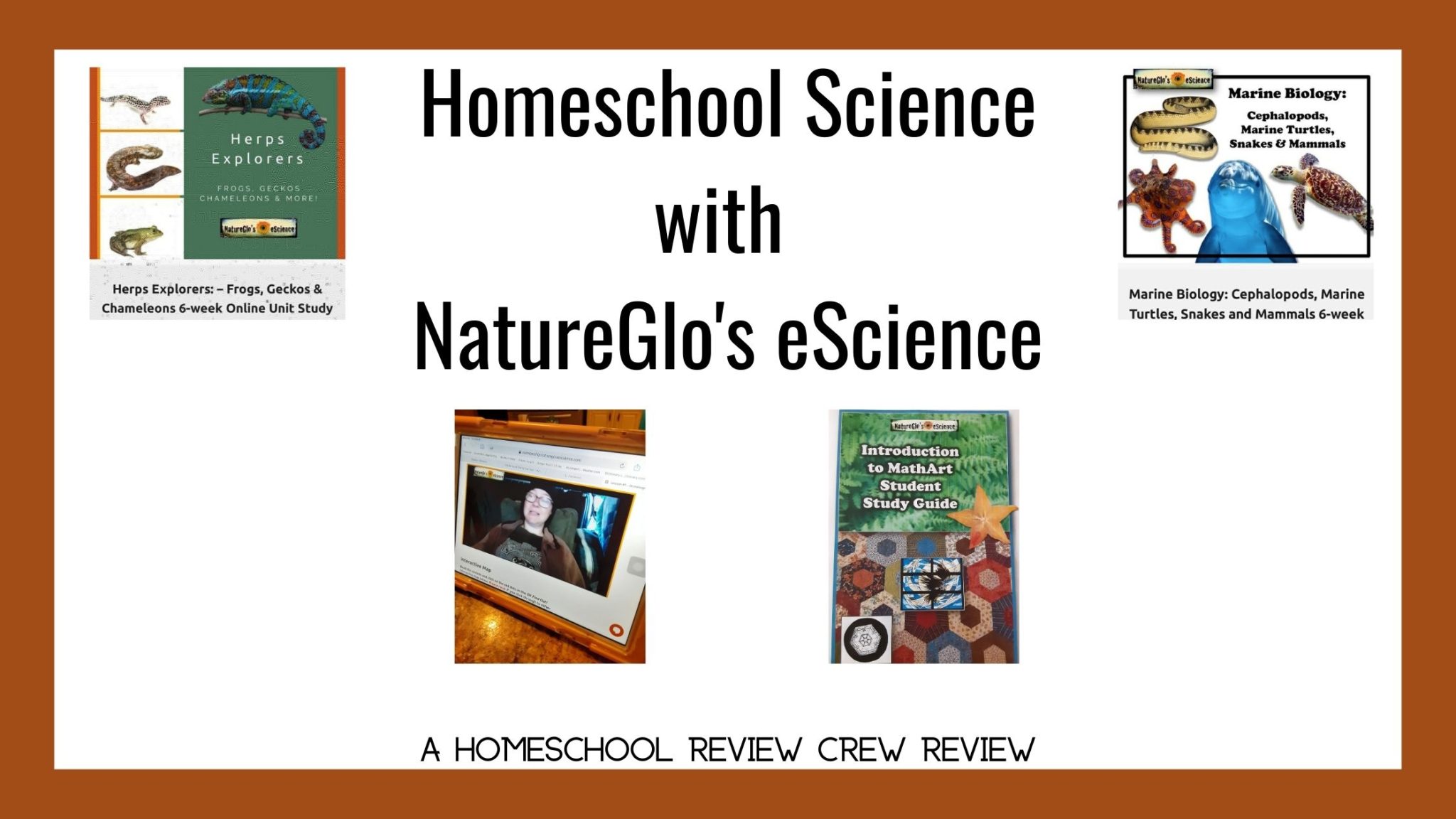
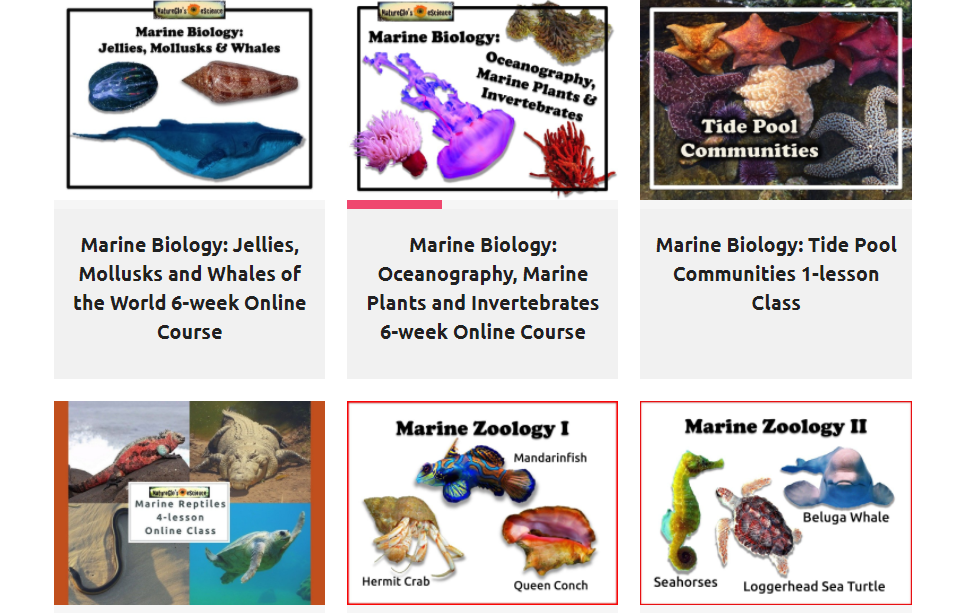
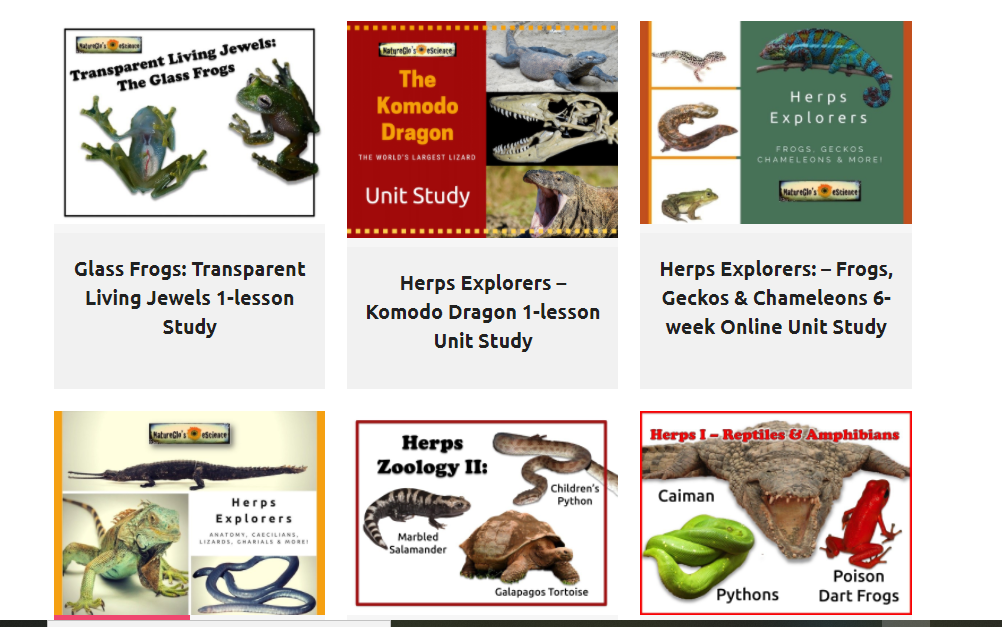
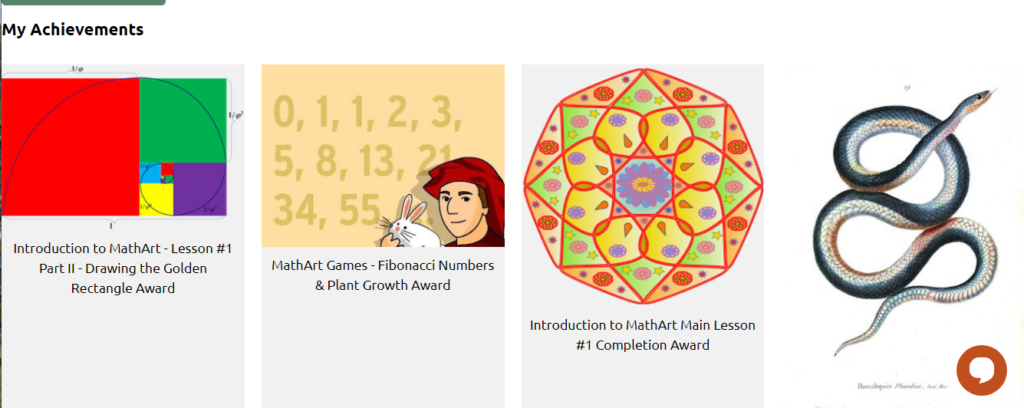
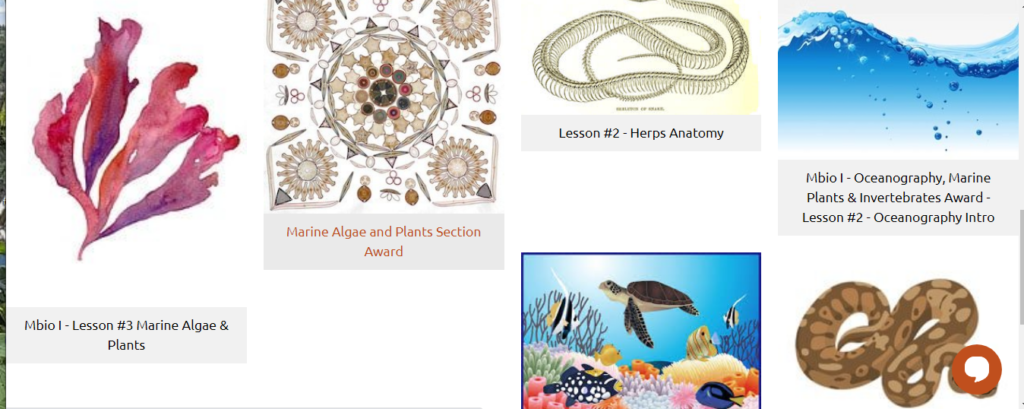
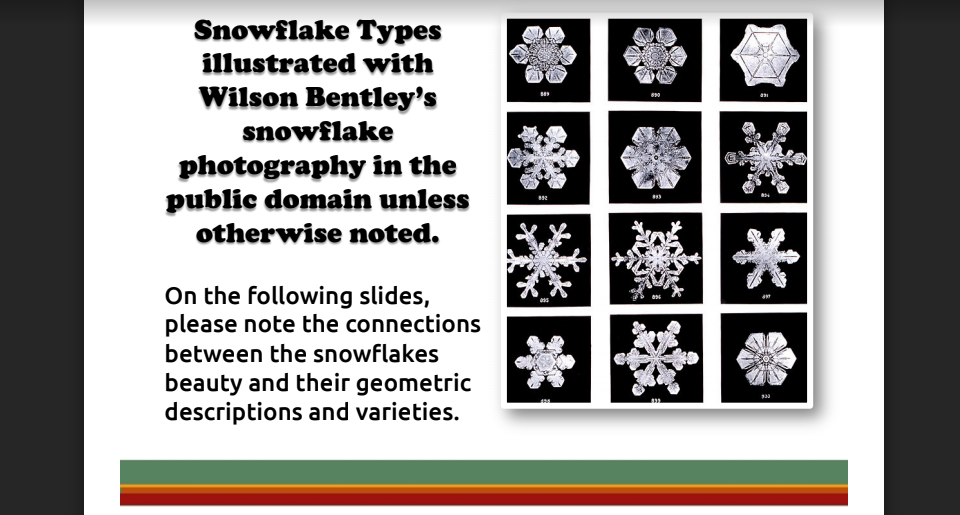
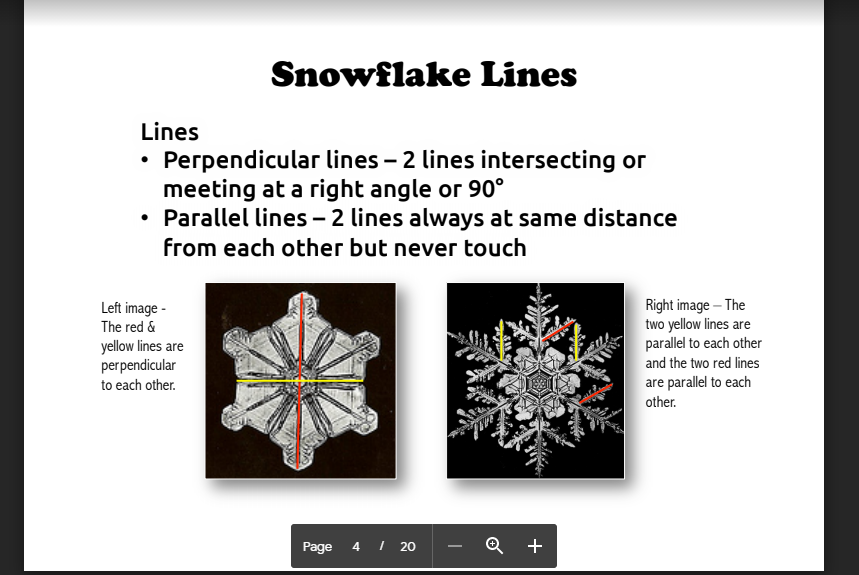
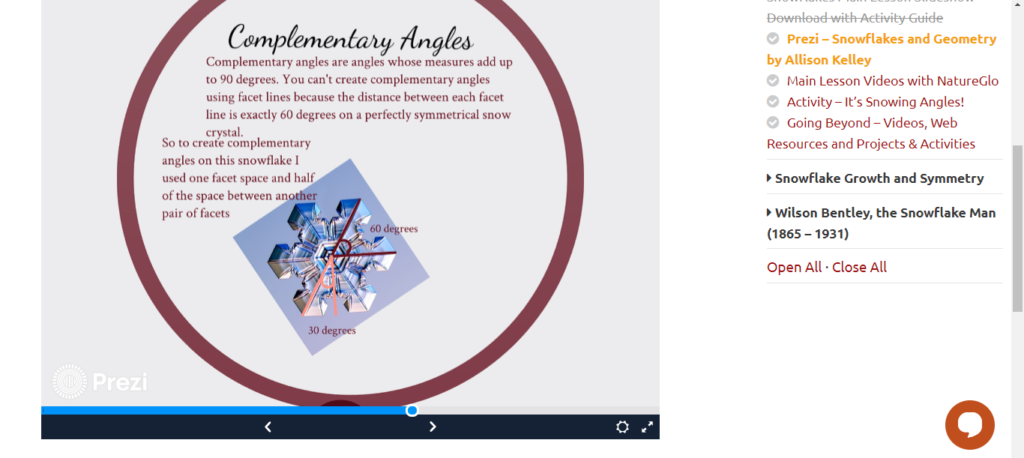
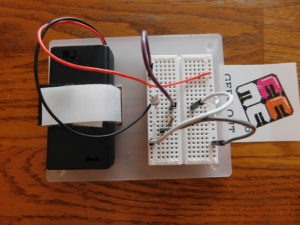
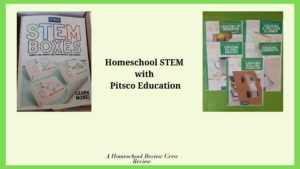
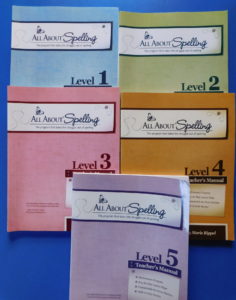
Nice review! I used some of the marine biology units as an “in between” interest led course. I agree, it was a little different than what we were used to (traditional), but still a neat way to present science courses.
Sharon, thank you for this thorough and wonderful review. I find it fascinating what type of learners learn best with my courses. That’s so interesting that it worked for your son, but, the style didn’t quite suit your daughter’s learning style and preferences. Thanks for sharing that pointed feedback. This is why I at least provide the format of the PowerPoint with the study guides, as I know some parents and now I see, some children, prefer more structure. Thank you!
You’re welcome! My son is thoroughly enjoying the herps courses. The PowerPoint slides and study guides do work well for learners that prefer more structure. I’m glad I had the opportunity to review your courses.